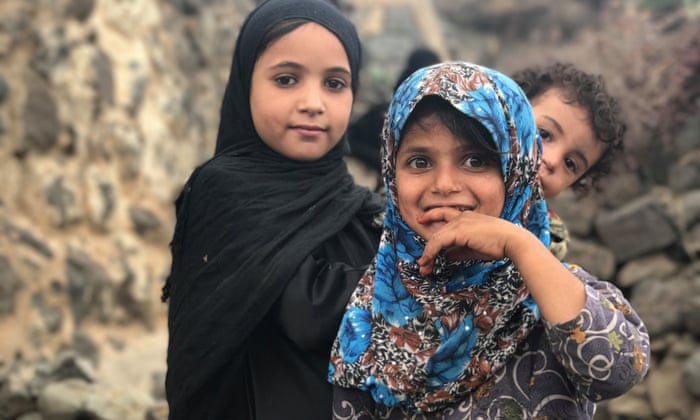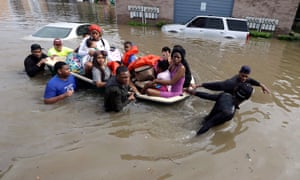Deforestation
Forests cover 31% of the land area on our planet. They produce vital oxygen and provide homes for people and wildlife. Many of the world’s most threatened and endangered animals live in forests, and 1.6 billion people rely on benefits forests offer, including food, fresh water, clothing, traditional medicine and shelter.
But forests around the world are under threat from deforestation, jeopardizing these benefits. Deforestation comes in many forms, including fires, clear-cutting for agriculture, ranching and development, unsustainable logging for timber, and degradation due to climate change. This impacts people’s livelihoods and threatens a wide range of plant and animal species. Some 46-58 thousand square miles of forest are lost each year—equivalent to 48 football fields every minute.
Forests play a critical role in mitigating climate change because they act as a carbon sink—soaking up carbon dioxide that would otherwise be free in the atmosphere and contribute to ongoing changes in climate patterns. Deforestation undermines this important carbon sink function. It is estimated that 15% of all greenhouse gas emissions are the result of deforestation.
Deforestation is a particular concern in tropical rainforests because these forests are home to much of the world’s biodiversity. For example, in the Amazon around 17% of the forest has been lost in the last 50 years, mostly due to forest conversion for cattle ranching. Deforestation in this region is particularly rampant near more populated areas, roads and rivers, but even remote areas have been encroached upon when valuable mahogany, gold and oil are discovered.
WWF has been working to protect forests for more than 50 years. With a focus on protected areas management and sustainable forestry, WWF works with governments, companies, communities and other stakeholders to promote certification for responsible forest management practices, combat illegal logging, reform trade policies and protect forested areas.
| Deforestation |
Famine
A famine is a widespread scarcity of food,[1] caused by several factors including crop failure, population imbalance, or government policies. This phenomenon is usually accompanied or followed by regional malnutrition, starvation, epidemic, and increased mortality. Every inhabited continent in the world has experienced a period of famine throughout history. In the 19th and 20th century, it was generally Eastern Europe and Asia that suffered the most deaths from famine. The numbers dying from famine began to fall sharply from the 1970s.
Some countries, particularly in sub-Saharan Africa, continue to have extreme cases of famine. Since 2010, Africa has been the most affected continent in the world. As of 2017, the United Nations has warned some 20 million are at risk in South Sudan, Somalia, Nigeria and Yemen. Agricultural conditions have been fluctuating more and more due to variations in weather, and the distribution of food has been affected by conflict. Most programmes now direct their aid towards Africa.
Food shortages in a population are caused either by a lack of food or by difficulties in food distribution; it may be worsened by natural climate fluctuations and by extreme political conditions related to oppressive government or warfare. The conventional explanation until 1981 for the cause of famines was the Food availability decline (FAD) hypothesis. The assumption was that the central cause of all famines was a decline in food availability.[138] However, FAD could not explain why only a certain section of the population such as the agricultural laborer was affected by famines while others were insulated from famines.[139] Based on the studies of some recent famines, the decisive role of FAD has been questioned and it has been suggested that the causal mechanism for precipitating starvation includes many variables other than just decline of food availability. According to this view, famines are a result of entitlements, the theory being proposed is called the "failure of exchange entitlements" or FEE.[139] A person may own various commodities that can be exchanged in a market economy for the other commodities he or she needs. The exchange can happen via trading or production or through a combination of the two. These entitlements are called trade-based or production-based entitlements. Per this proposed view, famines are precipitated due to a breakdown in the ability of the person to exchange his entitlements.[139] An example of famines due to FEE is the inability of an agricultural laborer to exchange his primary entitlement, i.e., labor for rice when his employment became erratic or was completely eliminated.[139]
According to the Physicians for Social Responsibility (PSR), global climate change is additionally challenging the Earth's ability to produce food, potentially leading to famine.
Some elements make a particular region more vulnerable to famine. These include poverty, population growth,[141] an inappropriate social infrastructure, a suppressive political regime, and a weak or under-prepared government.
The first line of defense is the agro-ecosystem on which food is produced: diverse ecosystems with well managed soils high in organic matter tend to be more resilient. The second line of defense is the wealth and skills of individual households: if those households affected by bad weather such as drought have savings or skills they may be able to do all right despite the bad weather. The final line of defense is created by the formal institutions present in a society. Governments, churches, or NGOs must be willing and able to mount effective relief efforts. Pulling this together, Evan Fraser argues that if an ecosystem is resilient enough, it may be able to withstand weather-related shocks. But if these shocks overwhelm the ecosystem's line of defense, it is necessary for the household to adapt using its skills and savings. If a problem is too big for the family or household, then people must rely on the third line of defense, which is whether or not the formal institutions present in a society are able to provide help. Evan Fraser concludes that in almost every situation where an environmental problem triggered a famine you see a failure in each of these three lines of defense.[128]Hence, understanding how climate change may cause famines in the future requires combining both an assessment of local socio-economic and environmental factors along with climate models that predict where bad weather may occur in the future[129][130][131]

Flood
A flood is an overflow of water that submerges land that is usually dry.[1] The European Union (EU) Floods Directive defines a flood as a covering by water of land not normally covered by water.[2] In the sense of "flowing water", the word may also be applied to the inflow of the tide.
Flooding may occur as an overflow of water from water bodies, such as a river, lake, or ocean, in which the water overtops or breaks levees, resulting in some of that water escaping its usual boundaries,[3] or it may occur due to an accumulation of rainwater on saturated ground in an areal flood. While the size of a lake or other body of water will vary with seasonal changes in precipitation and snow melt, these changes in size are unlikely to be considered significant unless they flood property or drown domestic animals.
Floods can also occur in rivers when the flow rate exceeds the capacity of the river channel, particularly at bends or meandersin the waterway. Floods often cause damage to homes and businesses if they are in the natural flood plains of rivers. While riverine flood damage can be eliminated by moving away from rivers and other bodies of water, people have traditionally lived and worked by rivers because the land is usually flat and fertile and because rivers provide easy travel and access to commerce and industry.
Some floods develop slowly, while others such as flash floods, can develop in just a few minutes and without visible signs of rain. Additionally, floods can be local, impacting a neighborhood or community, or very large, affecting entire river basins

Drought
.A drought is a period of below-average precipitation in a given region, resulting in prolonged shortages in the water supply ,atmospheric weather , surface water or ground water. A drought can last for months or years, or may be declared after as few as 15 days.[1] It can have a substantial impact on the ecosystem and agriculture of the affected region[2] and harm to the local economy.[3]Annual dry seasons in the tropics significantly increase the chances of a drought developing and subsequent bush fires. Periods of heat can significantly worsen drought conditions by hastening evaporation of water vapour.


Drought
.A drought is a period of below-average precipitation in a given region, resulting in prolonged shortages in the water supply ,atmospheric weather , surface water or ground water. A drought can last for months or years, or may be declared after as few as 15 days.[1] It can have a substantial impact on the ecosystem and agriculture of the affected region[2] and harm to the local economy.[3]Annual dry seasons in the tropics significantly increase the chances of a drought developing and subsequent bush fires. Periods of heat can significantly worsen drought conditions by hastening evaporation of water vapour.
Many plant species, such as those in the family Cactaceae (or cacti), have drought tolerance adaptations like reduced leaf area and waxy cuticles to enhance their ability to tolerate drought. Some others survive dry periods as buried seeds. Semi-permanent drought produces arid biomes such as deserts and grasslands.[4] Prolonged droughts have caused mass migrations and humanitarian crises. Most arid ecosystems have inherently low productivity. The most prolonged drought ever in the world in recorded history occurred in the Atacama Desert in Chile (400 Years).

Three main natural disasters deforestation, famine, flood, mainly caused by human interference.
ReplyDelete